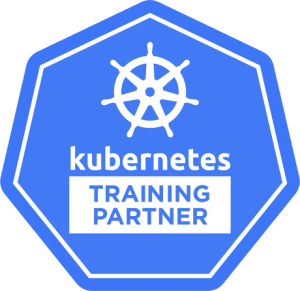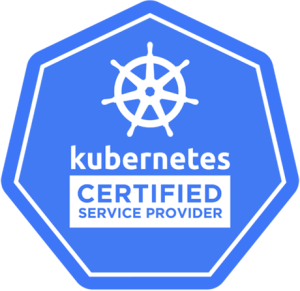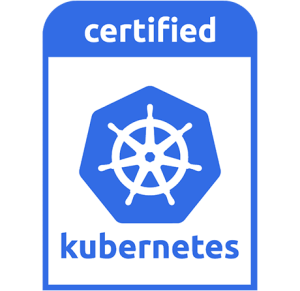Blogs
Introduction
Kubernetes Operators have become a cornerstone in the Kubernetes ecosystem, offering an advanced method of automating and managing applications and their components within Kubernetes environments. This blog post delves into what Kubernetes Operators are, their benefits, how they work, and best practices for leveraging them effectively in your Kubernetes setup.
Understanding Kubernetes Operators
Kubernetes Operators are software extensions that utilize custom resources to manage applications and their components. They follow the Kubernetes principles and are designed to handle operational tasks automatically. This includes installing, upgrading, configuring, and repairing applications. Operators extend Kubernetes' capabilities, allowing you to automate tasks that would typically require manual intervention.
The Anatomy of a Kubernetes Operator
The anatomy of a Kubernetes Operator involves several key components that work together to manage applications on Kubernetes. These include:
- Custom Resource Definitions (CRDs): CRDs are extensions of the Kubernetes API that allow you to create custom resources. Operators use CRDs to introduce new resource types specific to an application or service. For example, an Operator for a database might introduce a Database CRD, representing a database instance within Kubernetes.
Example Operator YAML:
apiVersion: kubeops.net/v1
kind: KubeOpsApp
metadata:
name: example-app
spec:
# Specification for the KubeOpsApp
size: 3
name: "kubeops-example"
image: "kubeops/example-image:latest"
resources:
requests:
memory: "64Mi"
cpu: "250m"
limits:
memory: "128Mi"
cpu: "500m"
Example CRD YAML:
apiVersion: apiextensions.k8s.io/v1
kind: CustomResourceDefinition
metadata:
name: projectlists.kubeops.net
spec:
group: kubeops.net
versions:
- name: v1
served: true
storage: true
schema:
openAPIV3Schema:
type: object
properties:
apiVersion:
type: string
kind:
type: string
metadata:
type: object
spec:
type: object
properties:
projects:
type: array
items:
type: object
properties:
name:
type: string
description:
type: string
status:
type: string
enum: ["active", "completed", "pending"]
startDate:
type: string
format: date
endDate:
type: string
format: date
scope: Namespaced
names:
plural: projectlists
singular: projectlist
kind: ProjectList
shortNames:
- pl
- Controller: At the heart of an Operator is a controller, a loop that watches the state of your resources in the cluster. It compares the observed state of these resources to the desired state defined by the CRDs and takes corrective action when necessary. For instance, if a node hosting a database instance fails, the controller can initiate a failover procedure.
- Custom Resources (CRs): Custom Resources are instances of CRDs and represent the desired state of an application or service managed by the Operator. They are defined in a YAML format and provide a declarative way to manage applications. For example, a Database CR might specify the number of replicas, storage size, and version for a database managed by the Operator.
- Operator Lifecycle Manager (OLM): OLM is a tool that facilitates managing the lifecycle of Operators within a Kubernetes cluster. It handles the installation, upgrade, and role-based access control of Operators, ensuring they are running effectively and securely.
- Watcher Mechanism: Operators constantly monitor the state of their Custom Resources. This watcher mechanism allows the Operator to react immediately to changes, ensuring the managed applications are always in the desired state. For example, if a user updates the Database CR to request more storage, the Operator will immediately act to scale the storage.
- Reconciliation Logic: This is the core logic within the controller that defines how the Operator responds to changes in the state of its resources. The reconciliation loop continuously compares the actual state of the managed resources with the desired state defined in the CRs and takes actions to reconcile the two. This logic can handle complex operational tasks, like backup, restore, or scaling operations.
- API Interaction: Operators interact with the Kubernetes API to create, update, delete, and manage resources. They use client libraries provided by Kubernetes to communicate with the API server, enabling them to manage resources effectively.
Benefits of Using Kubernetes Operators
Kubernetes Operators bring a plethora of benefits, enhancing the management and automation of complex applications. Here are some examples with detailed explanations:
Automated Application Lifecycle Management: Operators can automate the deployment, updates, backups, and scaling of applications. For instance, an Operator managing a database can automatically handle version upgrades, apply security patches, and backup data without manual intervention, thus reducing the operational burden on DevOps teams.
Customized Resource Management: Operators enable precise control over the resources allocated to applications. For example, an Operator designed for a data-intensive application like Apache Kafka can automatically adjust storage and compute resources based on usage patterns, ensuring optimal performance and cost-effectiveness.
Enhanced Fault Tolerance and Self-Healing: Kubernetes Operators can detect and rectify application-specific failures. For example, an Operator managing a distributed cache system like Redis could monitor for failed nodes and replace them automatically, ensuring high availability and resilience.
Streamlined Application Configuration and Tuning: Operators can manage complex configurations, adapting to different environments. This means, for instance, an Operator for a web application can automatically tune performance settings based on the environment it's deployed in, whether it's development, staging, or production.
Seamless Integration with Kubernetes Ecosystem: Kubernetes Operators integrate smoothly with Kubernetes features and APIs. This allows them to leverage the existing functionalities like RBAC, Secrets, and Network Policies. For example, an Operator managing an API gateway can utilize Kubernetes Secrets to securely store and manage API keys and tokens.
Scalability and Efficiency: Operators enable applications to scale more efficiently by automating the scaling process. An Operator for a microservices-based application can monitor the load and scale up or down the number of pods as required, ensuring efficient resource utilization.
Simplified Complex Operations: Operators can simplify complex tasks which would otherwise require deep domain knowledge. For instance, managing a clustered database like Cassandra requires significant expertise, but an Operator can automate many of the complex tasks involved, making it easier for teams to manage.
Rapid Recovery from Disasters: In case of a disaster, Operators can significantly speed up the recovery process. For instance, an Operator managing a critical application can be programmed to automatically redeploy the application in another region if the primary region becomes unavailable.
Custom Health Checks and Monitoring: Operators can implement application-specific health checks, going beyond the standard Kubernetes probes. For instance, an Operator for an e-commerce application can monitor specific metrics like transaction completion rates and trigger alerts or remediation actions if anomalies are detected.
Security Perspective
While Kubernetes Operators significantly enhance automation and management capabilities in Kubernetes environments, it's crucial to briefly discuss the associated security risks. Kubernetes Operators automate the deployment, scaling, and operational tasks of complex applications. However, this high level of automation also introduces potential security risks that need to be carefully managed.
Understanding the Security Risks
Privilege Escalation:
Operators are powerful, automated tools designed to manage complex applications within Kubernetes environments. They work by having elevated access to the Kubernetes API, allowing them to create, modify, and delete resources as needed to manage applications. However, this level of access also poses a significant security risk if an operator is compromised. Attackers could exploit a vulnerable operator to perform unauthorized actions within the cluster, such as launching malicious containers, modifying running applications, or accessing sensitive data. To mitigate this risk, it's crucial to ensure operators are securely configured and access controls are strictly enforced.
Misconfiguration:
The automation provided by operators is driven by their configuration. A misconfigured operator can unintentionally expose the cluster to significant risks, such as creating public endpoints for sensitive applications, inappropriate resource allocations, or disabling security features. These misconfigurations can be leveraged by attackers to gain unauthorized access or disrupt services. Regular reviews of operator configurations, along with automated tools to detect and correct misconfigurations, are essential components of a robust security strategy.
Third-party Risk:
Kubernetes Operators are often developed by third-party organizations or the open-source community. While this fosters innovation and collaboration, it also introduces risks if operators are not thoroughly vetted. A third-party operator may contain vulnerabilities, backdoors, or malicious code that could compromise the security of the Kubernetes cluster. Before adopting a third-party operator, it's critical to assess its security posture, review its source code (if available), check the developer's reputation, and ensure it receives regular updates to address newly discovered vulnerabilities.
Complexity in Audit and Compliance:
The dynamic and automated nature of operators can make it challenging to track their actions and ensure compliance with security policies and standards. Operators can modify cluster resources in ways that are difficult to predict, complicating efforts to audit the environment and ensure it adheres to security best practices. To address this complexity, organizations should implement comprehensive logging and monitoring solutions that can track operator actions and detect deviations from expected behaviors. Additionally, integrating operators into the organization's overall security and compliance frameworks ensures that their activities are subject to the same standards as other components of the IT environment.
Mitigating the Risks
To effectively mitigate these risks, organizations should adopt a multifaceted approach to security:
- Implement the principle of least privilege by limiting operator permissions to the minimum necessary to perform their tasks.
- Conduct regular security audits and reviews of operator configurations and activities to identify and rectify potential security issues.
- Use automated tools for continuous monitoring and detection of misconfigurations or suspicious activities associated with operators.
- Ensure a thorough vetting process for third-party operators, including security assessments and regular updates, to protect against vulnerabilities.
- Incorporate operators into the broader security and compliance frameworks of the organization, ensuring their activities are aligned with overall security objectives.
By understanding the unique security challenges posed by Kubernetes operators and implementing these mitigation strategies, organizations can harness the benefits of automation and management capabilities while minimizing the associated risks.
Creating Your Kubernetes Operator
Creating an Operator involves defining CRDs and writing a controller to manage those resources. You can write Operators in any language that can communicate with the Kubernetes API, but Go is the most common due to its first-class support in the Kubernetes ecosystem.
Best Practices for Kubernetes Operators
When deploying Kubernetes Operators, it's crucial to adhere to best practices to ensure efficiency and security:
- Focused Responsibility: Each Operator should manage a specific application or component. Avoid creating an Operator that's a "jack of all trades." For instance, if you have an Operator for a database like PostgreSQL, it should solely focus on managing instances of PostgreSQL.
- Idempotency is Key: An Operator should be able to reconcile its current state with the desired state reliably. This means if the Operator runs the same operations multiple times, the end state should be consistent. This is critical for ensuring stability and predictability.
- Robust Error Handling: Operators should be resilient to failures and unexpected states. For example, if an Operator manages a messaging queue like RabbitMQ, it should be able to handle scenarios like network disruptions, node failures, and automatically restore the desired state without human intervention.
- Comprehensive Monitoring and Logging: Operators should provide detailed logs and metrics for monitoring. This is vital for troubleshooting and understanding the Operator’s actions. For instance, an Operator managing a web server should log all scaling activities and configuration changes, and expose metrics like response times and server load.
- Security as a Priority: Operators should follow security best practices like using minimal privileges, rotating credentials, and encrypting communications. For instance, an Operator managing a sensitive application should not have more privileges than necessary and should use encrypted channels to communicate with the Kubernetes API server.
- Regular Updates and Maintenance: Keep your Operators up-to-date with the latest features and security patches. This is similar to how you would maintain any other critical piece of software. Regular updates help in keeping the managed applications and the Kubernetes cluster secure.
- User-Friendly Custom Resource Definitions (CRDs): CRDs should be as intuitive as possible. This includes clear documentation and examples, making it easier for users to understand and use your Operator.
- Efficient Resource Management: Operators should manage resources efficiently to optimize performance and minimize costs. For example, an Operator managing a cloud resource should be able to scale resources down or shut them down during periods of low usage.
- Test Thoroughly: Before deploying an Operator in a production environment, thoroughly test it in a controlled setting. This includes testing for various failure scenarios to ensure the Operator behaves as expected.
- Feedback Loop with Users: Engage with the users of your Operator to gather feedback and improve its functionality and usability. Continuous improvement based on user feedback can significantly enhance the Operator’s effectiveness.Use Cases for Kubernetes Operators
Kubernetes Operators can be used in a variety of scenarios, such as:
Database Management: Operators can automate the deployment, scaling, and management of database systems like PostgreSQL, MySQL, or MongoDB. They can handle tasks like backups, recovery, and replication, ensuring databases are consistently optimized for performance and resilience.
Application Lifecycle Management: Operators can manage complex, stateful applications through their entire lifecycle, from deployment to scaling and updates. They automate routine maintenance tasks and reduce the need for manual intervention.
Monitoring and Logging: Operators can enhance monitoring and logging capabilities by automating the deployment and configuration of tools like Prometheus and Elasticsearch, ensuring that logging and monitoring systems are always correctly configured and up-to-date.
Continuous Delivery: Operators can facilitate continuous delivery processes by automating the deployment and management of CI/CD tools within Kubernetes, streamlining the development and deployment pipeline.
Network Configuration: Operators can manage and automate network policies, load balancers, and DNS configurations, ensuring that network settings are consistently applied across the cluster.
Security and Compliance: Operators can automate the enforcement of security policies and compliance standards, ensuring that the Kubernetes environment adheres to organizational and regulatory requirements.
Conclusion
Kubernetes Operators offer a powerful way to automate complex tasks, making Kubernetes management more efficient and reliable. By understanding and implementing Operators appropriately, organizations can significantly enhance their Kubernetes environments' automation and management capabilities.
Check out our latest blogpost
Kubernetes in Focus: An Outlook on Future Growth Areas
Any Questions?
Please feel free to contact us for any question that is not answered yet.
We are looking forward to get in contact with you!
KubeOps GmbH
Hinter Stöck 17
72406 Bisingen
Germany
-
Telefon:
+49 7433 93724 90
-
Mail:
This email address is being protected from spambots. You need JavaScript enabled to view it.





